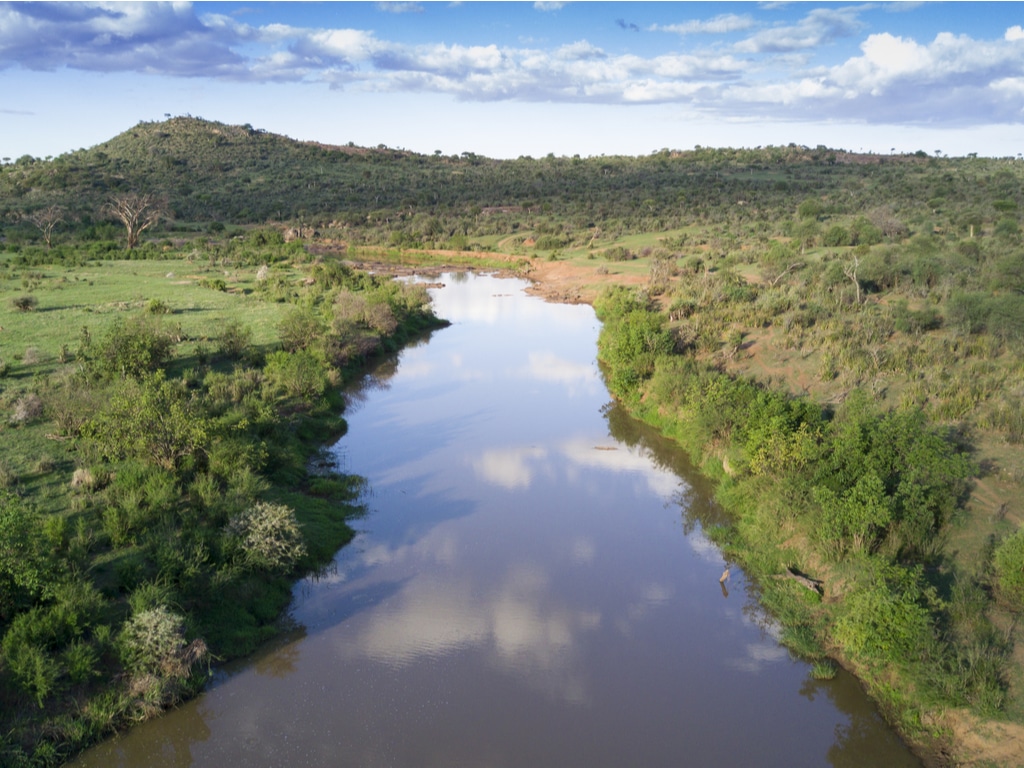The Akanyaru River is the main tributary of the Nyabarongo River. The river is found in the western highlands of Burundi and Rwanda where it flows east and north of Burundi along the border of two countries before joining Nyabarongo River in bugesera district of Rwanda thus forming the Akagera River that flows towards Victoria Lake in Uganda. The lower stretches of Akanyaru River has important but unprotected wetlands that are useful for human activities.
COURSE
The Mugere River which is a major headwater rises at an elevation of 2,450m in Burundi. The river has sources with an elevation of 2,300m in the south of Rwanda. Many valleys of the higher tributaries are covered by papyrus that contains seasonal swamp forests and the upstream portion of the river has a catchment area of 2,650km2. The lower course of the river is a belt of permanent wetlands of about 7km wide and end where it reaches the Nyabarongo River.
The river drops from an elevation of 1,465m to 1,400m. The swamp belt is fed from the right by Lake Cyohoha north and in the Cyohoha south. The Burundi side of the swamp belt has about 14600ha of permanent swamp along a 63km stretch of the river with the swamp reaching 6km to 10km up to the valleys of tributaries.
CLIMATE
The upstream part of the river basin has an average annual rainfall of about 1200 mm, average rainfall within the wetlands is about 800 mm. Rwanda is blessed with 2 rainy seasons where one is from mid-September to mid-December and the other from march to May. Therefore the climate change increases both in floods and droughts.
FAUNA
The Akanyaru wetland is among the seven main important birding areas with about 60 recorded bird species including the vulnerable such as papyrus yellow warbler, great snipe, papyrus gonolek, yellow warbler, Malagasy pond heron, lesser flamingos, pallied harrier and lesser krestel among others. The commonly spotted animals here is the sitatunga’s antelope which is always roaming within the swamps.
FLORA
There is a number of trees within the wetland such as bridelia, acacia polyacantha, ficus verruculosa, phoenix reclinata among others.

HUMAN ACTIVITIES
Since the wetland are not protected, the local people using the area engage in agricultural activities, but in the dry season the local people cut and burn the marsh vegetation for fertility. The wetlands and swamps are mainly used for rice plantation, sugarcane, maize and sweet potatoes plantation. Besides carrying out agriculture, the local people engage in fishing within the river and swamps. The wetlands are as well used for settlement thus after clearing them they decide to construct their homes. Around the area where Akanyaru River joins Nyabarongo River, the locals engage in brick making and thus the activity tends to destroy the habitat.
Therefore while on a safari tourists can engage in fishing from the Akanyaru River or ta the swamps. The river is endowed with many fish species that one can go fishing and later enjoy the catch from your respective hotel.
Boat cruising can also be carried out on the river where you can enjoy striking views from the stretching hills and low valleys with aquatic birds that can be spotted. Tourists can also participate in cultural tours and as well visit the locals and learn more on how they have survived using the rivers resources for so many years. All in all the Akanyaru River can be visited any time of the year.
